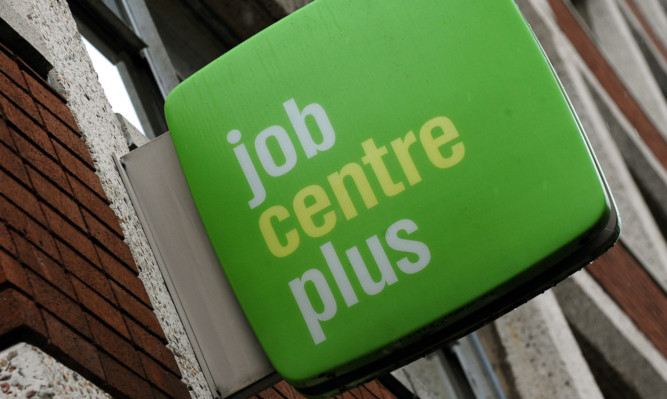Scotland has seen a record rise in employment at the same time as the number of people out of work has continued to fall.
The figures are in stark contrast to those at a UK level, where unemployment has increased by 15,000 to 2.52 million.
In Scotland. employment increased by 54,000 over the period January to March, which the Scottish Government hailed as the largest quarterly rise since 1992, when the figures began.
Unemployment fell for the six month in a row, with the jobless total now at 199,000.
While the number of people out of work across the UK continued to rise, official figures showed that north of the border there was a drop of 7,000 in the unemployment total over the period January to March.
The number of Scots who are unemployed, which includes those who are out of work and not claiming benefit, is 21,000 fewer than the same time last year.
The Scottish unemployment rate continues to be below that of the UK as a whole, at 7.3% north of the border compared with 7.8%.
The rise in employment means there are about 2,517,000 people in work in Scotland.
However there was a small rise in the number of Scots who are out of work and claiming jobseeker’s allowance. This was up by 100 from the March total to 136,800 for April.
First Minister Alex Salmond hailed the statistics, saying: “Today’s figures show the largest rise in employment on record with an increase of 54,000 people in employment. Scotland also showed the largest quarterly rise in employment rate of all 12 UK countries and regions.
“Scotland is out-performing the UK with a higher employment rate and lower unemployment rate. And our youth employment rate is continuing to make encouraging progress with more young people in work and youth unemployment falling again.”
With the January to March figures showing 67,000 16 to 24-year-olds are out of work, the Scottish youth unemployment rate is now 16.6%, lower than the rate for the UK as whole which stands at 20.3%.
While Mr Salmond said the SNP administration was “working hard to get people back into work and to create opportunities for our young people” he branded the UK Government’s continued pursuit of austerity measures as being the “biggest risk to Scotland’s economic recovery”.
The First Minister called on Chancellor George Osborne to use his spending review in June to “change his plans, accept his mistakes and learn the lesson that the key to economic growth is investment not austerity”.
While Scottish Secretary Michael Moore also welcomed the latest unemployment figures, he stressed the importance of the UK Government maintaining its economic strategy.
Mr Moore said: “The latest labour market figures are another welcome step in the right direction and it is good news that Scotland is doing well as part of UK. This shows that the measures we are taking on the economy are working.
“However, there is still a long way to go and unemployment remains a huge concern for families and individuals in Scotland. It is therefore important that we maintain our economic strategy, working together with all partners to ensure that unemployment continues to fall.
“I am confident that the measures introduced to Parliament as part of the Queen’s Speech earlier this month such as supporting families with childcare costs, and taking 35,000 businesses in Scotland out of National Insurance contributions altogether, will continue to aid the economic recovery in Scotland.”
The UK saw its third quarterly increase in a row in the jobless total.
The number of people in work fell by 43,000 in the latest quarter to March, to 29.7 million the biggest fall since autumn 2011.
Today’s data from the Office for National Statistics also revealed that annual wage growth for the three-month period was 0.4%, a fall of 0.4% on the previous quarter, and lagging well behind inflation.
The figure for March alone showed a fall in pay of 0.4%, the first negative since March 2009.
Meanwhile, average earnings excluding bonuses rose by 0.8%, the lowest rise since records began in 2001.
The figures also revealed that 902,000 people had been out of work for more than a year, a 23,000 increase on the three months to December.
The number of unemployed 16 to 24-year-olds fell by 17,000 to 958,000.
The number of people classed as economically inactive, including students, people on long-term sick leave and those who have given up looking for work, rose by 47,000 to nine million.
Despite today’s increase in UK unemployment, the total is 92,000 lower than a year ago.
